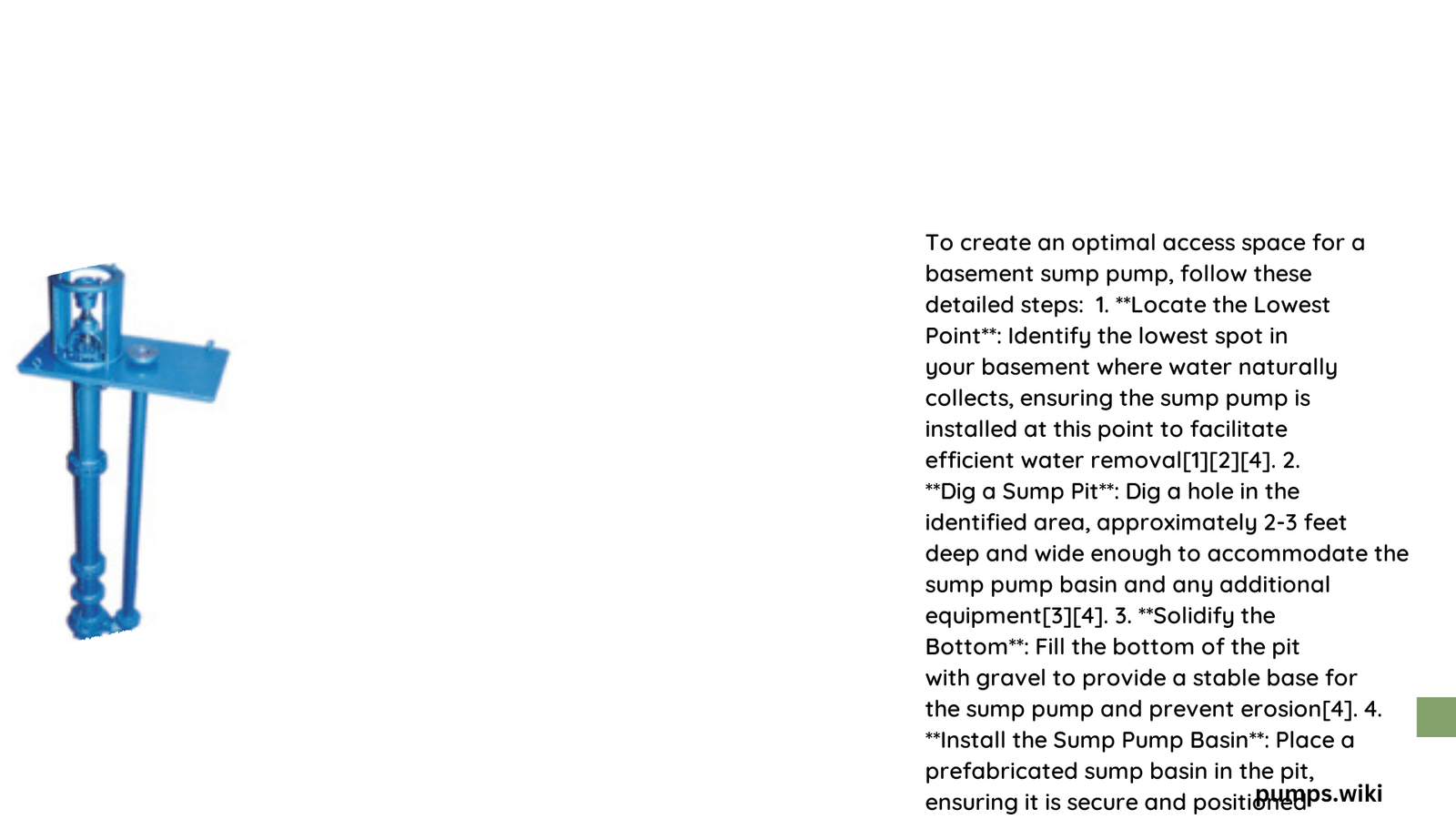A basement sump pump access space is a critical infrastructure element designed to manage groundwater and prevent basement flooding. Proper design involves strategic placement, precise dimensional requirements, and meticulous installation techniques that ensure efficient water removal and long-term structural protection for residential properties.
What Are the Essential Dimensions for Basement Sump Pump Access Space?
Designing an optimal basement sump pump access space requires careful consideration of multiple dimensional factors. Homeowners and contractors must focus on specific measurements to guarantee effective water management and pump functionality.
Precise Pit Measurements
| Dimension | Recommended Size | Purpose |
|---|---|---|
| Depth | 24-36 inches | Water storage capacity |
| Diameter | 18-24 inches | Pump accommodation |
| Floor Clearance | 2 inches below floor level | Easy access and emergency drainage |
Why Proper Sizing Matters?
Incorrect sump pump access space dimensions can lead to several critical issues:
- Inadequate Water Collection: Shallow pits restrict water storage capacity
- Pump Inefficiency: Narrow diameters limit pump performance
- Maintenance Challenges: Restricted access complicates routine inspections
How to Prepare the Basement Sump Pump Access Space?

Required Tools and Materials
- Construction Equipment
- Jackhammer
- Shovel
- Drill
- Measuring tape
-
Level
-
Installation Materials
- Concrete mix
- Gravel
- PVC pipes
- Sump tank
- Check valve
Step-by-Step Installation Process
Location Selection
- Identify lowest basement point
- Ensure proximity to power source
- Check drainage patterns
Excavation Techniques
- Mark precise hole dimensions
- Break concrete floor carefully
- Dig to required depth
- Add drainage gravel layer
What Are the Cost Considerations?
Comprehensive Budget Breakdown
- Sump Pump: $100 – $500
- Tank Installation: $50 – $200
- Piping and Accessories: $100 – $250
- Professional Labor: $200 – $500
Total Estimated Investment: $450 – $1,450
What Maintenance Practices Ensure Longevity?
Critical Maintenance Checklist
- Annual Inspection
- Check pump functionality
- Examine discharge pipes
- Clean sump pit
- Seasonal Preparation
- Test backup battery
- Clear debris
- Verify water flow
Technical Recommendations
Advanced Considerations
- Use corrosion-resistant materials
- Install battery backup systems
- Consider professional annual servicing
- Implement water alarm systems
Potential Challenges and Solutions
Common Sump Pump Access Space Problems
- Water Seepage
- Solution: Proper sealing and waterproofing
- Pump Failure
- Solution: Regular maintenance and backup systems
- Inadequate Drainage
- Solution: Correct pipe installation and grading
Conclusion
A well-designed basement sump pump access space is crucial for effective water management. Precise measurements, quality materials, and regular maintenance ensure long-term protection against potential water damage.
Pro Tips
- Always consult professional contractors
- Invest in high-quality equipment
- Prioritize preventative maintenance
